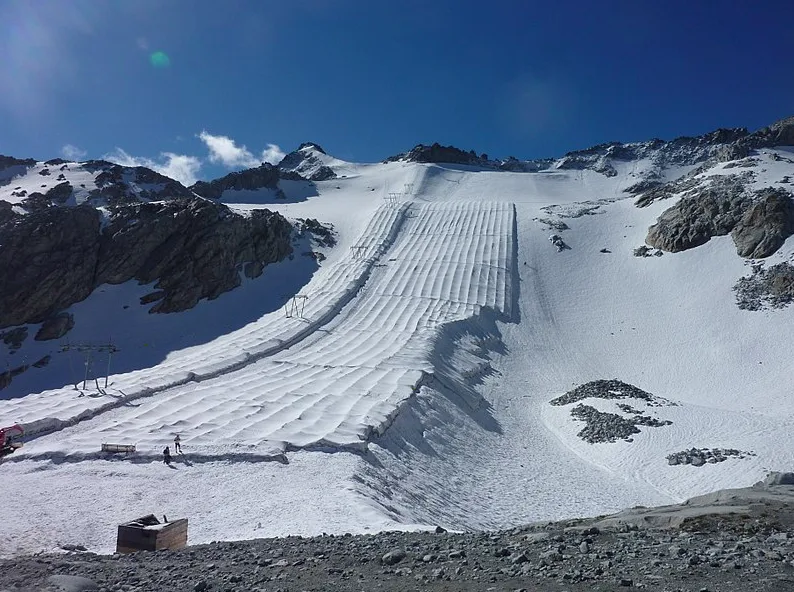
Italian ski resort covers glacier with tarps to slow melting
A ski resort in northern Italy is using an innovative approach to slow down climate change’s impact on the Presena Glacier.
The Presena Glacier resides in northern Italy and is a central part of the lucrative tourism industry that attracts skiers from around the world.
Tourism keeps the economy thriving for many nearby mountain communities, but rising temperatures are causing the glacier to melt and is forcing ski resorts to use innovative strategies to preserve the snow and ice.
More than 30 per cent of the Presena Glacier has melted since 1993 and a report from the European Geosciences Union predicts that 90 per cent of the Alps’ present-day glacier volume could disappear by 2100. If global initiatives to fight climate change yield the ideal scenario of limited warming by 2100, then only two-thirds of the present-day ice volume would melt.
The foreboding projections leave ski resorts with very few options - protect the snow and ice or face losing the main pillar of their business.
To prepare for the summer months, workers at the Pontedilegno-Tonale ski resort blanket the glacier with white tarpaulins, a geotextile material that can cover 100,000 square metres, as reported by AFP.

Tarpulins covering the Presena Glacier in northern Italy. Credit: Getty Images
Long sections of the sheets are unrolled down the mountain and then sewn together to prevent warm air from slipping underneath. The glacier is at an altitude of 2700 to 3000, so sandbags are placed along the edges of the tarpaulins to protect against the intense winds.
This initiative started in 2008 when the Italian firm Carosello-Tonale covered 30,000 square metres of the glacier. Since then, the tarpaulins have been laid out each summer to reflect sunlight and are removed in September before the winter season.
SHOULD REFLECTIVE BLANKETS BE USED IN THE ARCTIC?
The future of the climate will be shaped by the amount of greenhouse gas emissions that humans release over the coming decades. Even in the most ideal scenario where each country commits to drastically slashing their emissions, landscapes will permanently change, glaciers will vanish and sea levels will rise.
The good news is that technologies are being developed around the world and could eventually capture large amounts of carbon and help mitigate the effects of climate change. In 2009 Jason Box, a glaciologist at the Geological Survey of Denmark and Greenland, suggested covering parts of the Greenland ice sheet with reflective material to reduce its melt rate and prevent it from contributing to sea level rise.
SEE ALSO: Dozens of previously unknown viruses discovered in 15,000-year-old glaciers
Blanketing massive sections of the Arctic is many decades away and is not a foolproof solution - significant resources would be needed to maintain the coverings and they wouldn’t prevent the warm ocean water from melting the submerged sections of the glacier.
While it might be years or decades before larger areas and countries are covered by reflective blankets to preserve glaciers, workers at the Pontedilegno-Tonale ski resort are demonstrating that climate change is happening now, and it is time to act.












